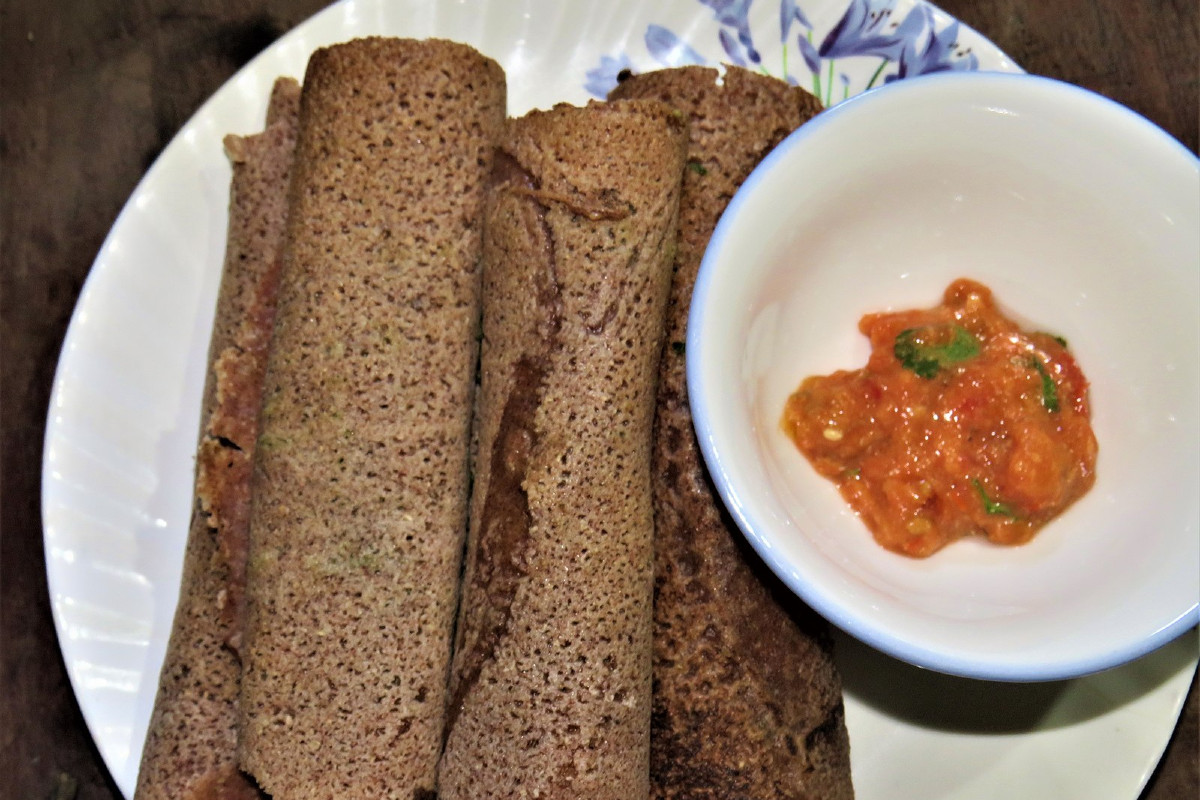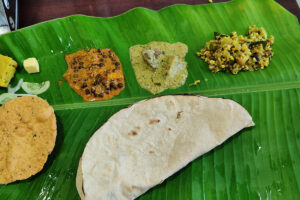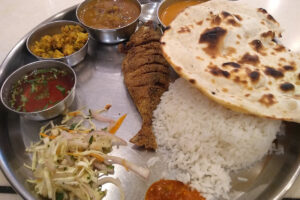Tucked away in the breathtaking Himalayas, the northeastern Indian state of Sikkim boasts a culinary scene as diverse and vibrant as its landscapes. Sikkim’s cuisine reflects a beautiful blend of Nepalese, Tibetan, and indigenous Lepcha influences, resulting in dishes that delight the palate with their unique flavors and textures.
In this blog post, I’ll guide you through some of the most popular traditional dishes in Sikkim. Get ready to tantalize your taste buds and expand your culinary horizons!
1. Gundruk and Sinki Soup
Description:
This iconic Sikkimese soup is both comforting and full of flavor. Gundruk is a fermented leafy vegetable dish with a tangy, slightly sour flavor, while sinki is a fermented radish. These ingredients are combined to create a hearty soup that warms the soul.
Recipe:
https://www.vahrehvah.com/gundruk-and-sinki-soup-recipe
Key Ingredients:
Gundruk (fermented leafy vegetables), sinki (fermented radish), onions, tomatoes, ginger, garlic, spices.
Popular Restaurant:
The Nettle and Fern Restaurant (highly regarded on Google Reviews)
2. Phagshapa
Description:
A hearty and satisfying pork dish, Phagshapa is a staple in Sikkimese households. Strips of pork fat are stewed with dried chilies and radishes, creating a rich, flavorful dish that’s often enjoyed with rice.
Recipe:
https://www.gfcookingclub.com/phagshapa-pork-with-chillies-radish/
Key Ingredients:
Pork fat, dried red chilies, radishes, spices.
Popular Restaurant:
Thakali (known for authentic Sikkimese cuisine)
3. Thukpa
Description:
Thukpa, a comforting noodle soup of Tibetan origin, is a beloved dish throughout Sikkim. It features a flavorful broth, noodles, vegetables, and often meat (chicken or mutton are common). Thukpa is the perfect antidote to a chilly Himalayan day.
Recipe:
https://www.houseandgarden.co.uk/recipe/sherpa-noodle-soup-thukpa
Key Ingredients:
Noodles, broth, vegetables (carrots, cabbage, onions, etc.), meat (optional), spices.
Popular Restaurant:
Taste of Tibet (famous for its Thukpa)
4. Momo
Description:
No discussion of Sikkimese cuisine is complete without mentioning momos! These steamed dumplings filled with savory fillings are a quintessential Sikkimese street food and a favorite among locals and tourists alike. Momos can be filled with a variety of ingredients, including minced meat (chicken, pork, or buff), vegetables, or cheese. They are often served with a fiery tomato-based chutney.
Recipe:
https://www.thespruceeats.com/steamed-momos-wontons-1957616
Key Ingredients:
Dough (refined flour and water), filling (meat, vegetables, or cheese), spices, tomato-based chutney.
Popular Restaurant:
Shuffle Momos (renowned for their variety of momos)
5. Sael Roti with Potato Curry
Description:
Sael roti is a deep-fried, puffy bread similar to puri. It’s a popular breakfast and snack item, often paired with a simple and flavorful potato curry. The combination of soft sael roti and the slightly spicy potato curry offers a delightful contrast in textures and flavors.
Recipe:
https://www.spicingyourlife.com/sel-roti-from-sikki/
Key Ingredients:
- Sael Roti: Refined flour, water, oil for frying
- Potato Curry: Potatoes, onions, tomatoes, ginger, garlic, spices.
Popular Restaurant:
Nimtho (a local favorite for authentic Sikkimese breakfasts)
6. Chhurpi Soup
Description:
Chhurpi, a hard, dried cheese, is a staple ingredient in Sikkimese cuisine. Chhurpi Soup is a simple yet satisfying dish where pieces of chhurpi are simmered in a flavorful broth with vegetables and spices.
Recipe:
https://www.vahrehvah.com/chhurpi-soup-recipe
Key Ingredients:
Chhurpi (hard, dried cheese), vegetables (onions, tomatoes, etc.), spices.
Popular Restaurant:
Hotel Sonam Delek (offers a variety of traditional Sikkimese dishes including Chhurpi Soup)
7. Kinema Curry
Description:
Kinema is a fermented soybean dish with a strong, pungent flavor that’s an acquired taste for some but beloved by many Sikkimese people. Kinema curry features these fermented soybeans cooked in a rich, flavorful sauce with onions, tomatoes, ginger, garlic, and spices.
Recipe:
https://www.nommygod.com/recipes/kinema
Key Ingredients:
Kinema (fermented soybeans), onions, tomatoes, ginger, garlic, spices.
Popular Restaurant:
The Dragon Wok (specializes in dishes using traditional Sikkimese ingredients)
8. Chhurpi-Ningro Curry
Description:
This unique curry combines two staple Sikkimese ingredients: chhurpi (dried cheese) and ningro (fiddlehead ferns). The chhurpi adds a chewy texture and slightly sour notes, while the ningro provides a subtle bitterness. These ingredients are cooked in a rich and savory sauce.
Recipe:
https://www.surfindia.com/recipes/chhurpi-ningro-curry.html
Key Ingredients:
Chhurpi (dried cheese), ningro (fiddlehead ferns), onions, tomatoes, ginger, garlic, spices.
Popular Restaurant:
Gangtok Groove (known for innovative twists on traditional recipes)
9. Sikkimese Style Pork Curry
Description:
Pork is a popular protein in Sikkim, and this curry showcases its deliciousness in a simple yet flavorful way. The pork is cooked in a tomato-based sauce with onions, ginger, garlic, and a blend of spices, resulting in tender, juicy pieces of pork infused with rich flavors.
Recipe:
https://nishkitchen.com/indian-pork-curry/
Key Ingredients:
Pork, onions, tomatoes, ginger, garlic, spices.
Popular Restaurant:
Blue Poppy Thakali (offers a variety of pork dishes in traditional styles)
10. Kodo Ko Roti with Gundruk Pickle
Description:
Kodo ko roti is a flatbread made from finger millet (kodo) flour. It’s a nutritious and gluten-free alternative to wheat-based bread. Kodo ko roti is often enjoyed with gundruk pickle, a tangy, slightly spicy accompaniment made from fermented leafy vegetables.
Recipe:
https://www.recipes18.com/all/recipe/kodo-ko-roti/
Key Ingredients:
- Kodo ko roti: Kodo (finger millet) flour, water.
- Gundruk Pickle: Gundruk (fermented leafy vegetables), onions, tomatoes, chiles, spices.
Popular Restaurant:
Nimtho (a great place to sample traditional Sikkimese home-style cooking)
Conclusion
I hope this culinary exploration has given you a deeper appreciation for the diverse and delicious traditional cuisine of Sikkim. With its blend of Nepali, Tibetan, and Lepcha influences, Sikkimese cuisine offers a feast for the senses, filled with unique flavors and textures waiting to be discovered.
Let me know if you’d like recommendations for additional dishes or want to delve into the specifics of Sikkimese cooking techniques. I’m always happy to share more about this captivating culinary tradition!




